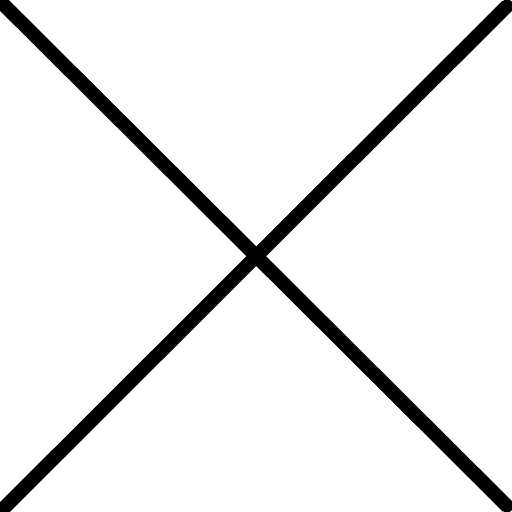Artificial Intelligence, or AI, has been in many headlines for a good reason. There are unimaginable uses for this technology, military, medical, scientific, entertainment; you name it. However, this type of technology is so new to humankind that we still don’t understand the repercussions it will have in the future.
One of the most exciting uses for me is the implementation of AI in the art world, a predominantly human industry. The essence of humanity must be art, right?
Now look at these images:

An AI called Midjourney made this set of images. They were generated with just a prompt of words, in this case: beautiful woman act, 4k, black background.
Interesting, isn’t it?
Look at more examples:
Next, a digital poster for interviews with the writers of Disney classica s, film studio set

and now, a robot against a mouse with wings fighting with chocolate brioches

This doesn’t end here. This technology is also capable of making realistic edits to existing images. For example, it can add and remove elements while considering shadows, reflections, and textures.
Look at this example by DALL-E 2

It can also take an image and create different variations inspired by the original.

AI can do this with just a simple set of words. You can create anything you want, whatever your heart desires, all without the need to write a single line of code or know how to draw.
Al Right after I discovered this, I asked myself this question: How is this even possible? How can I try it? Will this destroy the jobs of artists and illustrators? How will this become a billion-dollar industry?
How is this even possible?
Machines can be taught to interpret images the same way our brains do and analyze those images much more thoroughly than our human brains can. Computers have been trained to learn the differences between particular objects and items. Advanced algorithms can identify an object just by watching an image.

The next big step was to learn to create images. Therefore, to do this, machines use two neural networks. The first is used to create the image based on the text input by the user. The second neural network analyzes the generated image with reference images. By comparing the photos, it creates a score to determine the accuracy of the generated image. The score is returned to the original AI system, which can return an altered image for another score. The systems will continue to score likeness until the generated image matches the control image. That final match would then be the generated image that the user sees.
If you want to understand a little more about the technical aspects of this technology, I recommend these articles:
https://towardsdatascience.com/the-emerging-world-of-ai-generated-images-48228c697ee9
https://www.apriorit.com/dev-blog/599-ai-for-image-processing
How can I try it?
This technology is so new that the players that will dominate the industry in the future are just emerging. At the moment, three names stand out above the crowd
- DALL-E 2
- Midjourney
- Stable diffusion (open source)
DALL-E 2
the name DALL-E comes from mixing the artist Salvador Dalli and the famous character of Pixar Wall-e. This was the first AI that became mainstream in showing this technology to the public with the release of DALL-E 1.
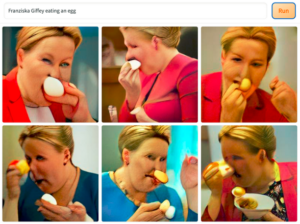
This was something never seen before. This was a computer generating images from a text prompt. Never in the history of humanity we’ve had technology like this. But, the results were still not impressive, no one would think for a second that these were real pictures, and there was a lack of realism and detail. this all changed with the release of DALL-E 2
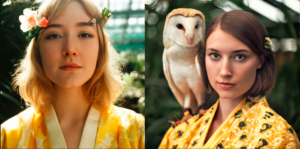
THESE ARE NOT PHOTOGRAPHS. These girls don’t exist, these scenes never happened, and these are computer-generated images created by DALL-E 2, with a simple text prompt.
this AI is so powerful that it is almost scary to think about. NEVER IN HUMAN HISTORY WE’VE HAD SOMETHING LIKE THIS.
If you want to try DALL-E 2, you need an invitation, and the software is still in beta.
MIDJOURNEY
This company uses the same kind of algorithm as DALL-E for its AI. They claim that they trained their AI with more artistic images so that the results are more artistic than the competition.
This AI doesn’t need an invitation; you can try it now. All you have to do is get into their website https://www.midjourney.com/home/ and click to join the beta. This will lead you to the Midjourney Discord, where you click on one of the newcomers’ rooms. In the chat, you type /imagine the prompt you want, and the AI will give you the result in less than a minute.
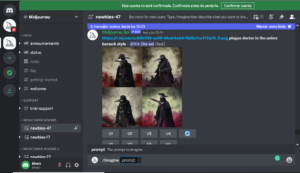
You can generate some free images in the trial mode. After that, you have to pay for a subscription, USD $10 gives you 200 images, and USD $30 gives unlimited images for a month.
here are some examples:

STABLE DIFFUSION (Dreamstudio)
Stable diffusion is an open-source project that uses the same algorithm technology as the above-mentioned. If you are tech-savvy, you can install the AI in your computer, train it with your own set of images and make it generate new images. All you need to do this is available on the website https://stability.ai/
If you just want to generate images without the hassle of doing this, you can access https://beta.dreamstudio.ai/dream. This is a company based on stable diffusion that allows you to generate images, but it offers a way better price than Midjourney or DALL-E 2. You can generate 1000 images for USD $10.
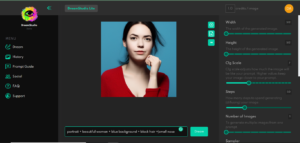
Here are some examples:

So….. is this it? are we going to stop making art? will this destroy the jobs of artists and illustrators?
This is a really tough question that only time can answer. In my opinion, this technology will revolutionize how we express ourselves and interpret the world. Some jobs might become obsolete.
Who needs an expensive illustrator that takes hours to do a picture when for 30 dollars, you can have all the images you want in less than a minute?
The thing is that this technology will generate new jobs that we don’t even know exist. You still have to set some prompts to the AI so that it can create the image; doing this is an art itself because the AI technology gives you unstable and different results every time, and you still might want to edit the images the AI gives you because it will never be precisely what you want in your head, you might also need to feed the algorithm with images of a particular style, you might want to moderate the input of users in case they are using this technology for evil purposes. etc.
How will this become the next big industry?
As I said before, never in the history of humans kind we have had this power in our hands, we can not only create illustrations and objects just with a set of text, but we can also generate images of people and events that never existed and this technology is advancing fast. This will allow people to unlock their full potential and be creative in ways they couldn’t be before. Look at this video where the author explains how he created a graphic novel that he later sold on amazon.com.
Undoubtedly, this technology will be the base of a new breed of digital artists and creators that will give a new meaning to what we call art.
AI cannot only generate images but: videos, music, animations, text, virtual worlds, and more. Watch this TED talk where Pierre Barreau explains AIVA, an AI that can generate music.
This technology is here to stay and will change the world in ways we cannot even imagine. There is no doubt this will be used for good and evil purposes. We have to be more aware of the information we are getting in our newsfeeds because it might come from an AI that is looking to affect us, and now more than ever, it has all the tools to make us believe anything literally.

